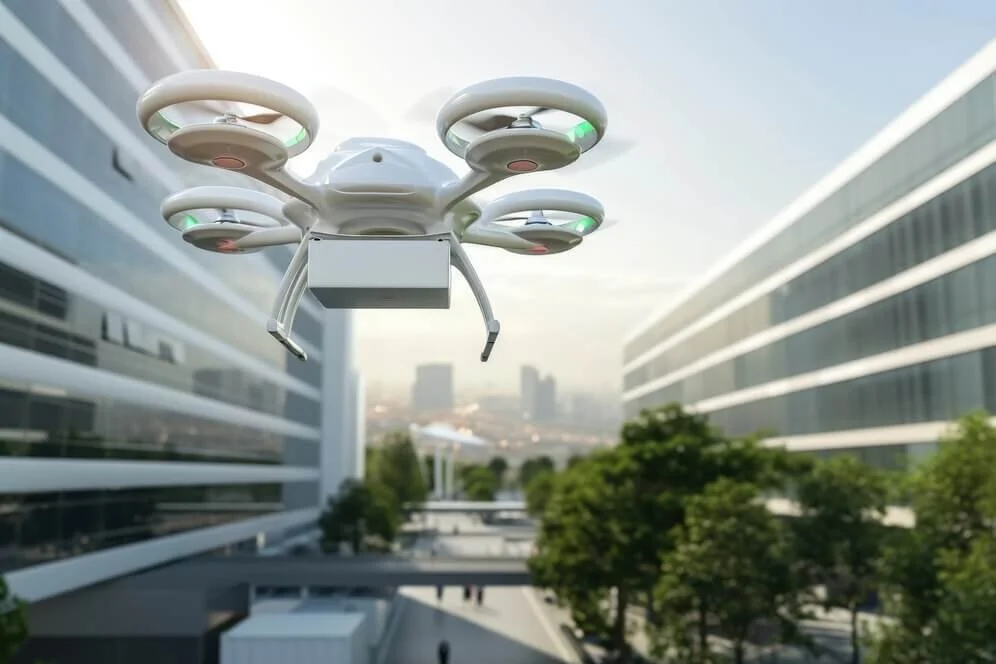Self-Flying Drones: How Autonomy is Transforming Industries in 2024
Imagine a world where drones can navigate complex environments, avoid obstacles, and complete tasks—all without human intervention. This isn’t science fiction; it’s the reality of self-flying drones in 2024. Thanks to advancements in artificial intelligence (AI), machine learning, and sensor technology, autonomous drones are revolutionizing industries and redefining what’s possible. At Raising Drones, based in West Palm Beach, FL, we’re at the forefront of this transformation, helping businesses harness the power of autonomy to improve efficiency, reduce costs, and unlock new opportunities.
What Are Self-Flying Drones?
Self-flying drones, also known as autonomous drones, are equipped with advanced technologies that allow them to operate without constant human control. These drones use a combination of sensors, GPS, and AI algorithms to navigate their surroundings, make decisions, and complete tasks.
- Key Features:
- Obstacle Avoidance: Sensors like LiDAR and cameras help drones detect and avoid obstacles in real-time.
- AI-Powered Navigation: Machine learning algorithms enable drones to analyze their environment and plan optimal flight paths.
- Automated Tasks: From mapping to inspections, self-flying drones can perform complex tasks with minimal human input.
How Autonomy is Transforming Industries
Self-flying drones are making waves across a wide range of industries, offering innovative solutions to age-old challenges. Here’s how autonomy is driving change in 2024:
1. Agriculture: Precision Farming at Scale
Autonomous drones are helping farmers optimize their operations by providing detailed data on crop health, soil conditions, and irrigation needs.
- Example: Drones equipped with multispectral cameras can fly over fields, capturing images that reveal areas of stress or disease. This data allows farmers to apply fertilizers and pesticides precisely where they’re needed, reducing waste and improving yields.
- Impact: According to a 2023 report by PwC, drone-assisted farming could increase global crop yields by 20% while reducing water and chemical usage by 30%.
2. Construction: Smarter Site Management
Self-flying drones are transforming construction sites by providing real-time data on progress, safety, and resource allocation.
- Example: Drones can autonomously survey construction sites, creating 3D maps and identifying potential issues like structural defects or safety hazards.
- Impact: A study by McKinsey & Company found that drones can reduce construction project timelines by 20% and lower costs by 15%.
3. Logistics: Faster, Greener Deliveries
Autonomous drones are revolutionizing last-mile delivery, offering a faster and more eco-friendly alternative to traditional methods.
- Example: Companies like Amazon Prime Air and Zipline are using self-flying drones to deliver packages in urban and rural areas. These drones can navigate complex environments and deliver goods in record time.
- Impact: The World Economic Forum estimates that drone deliveries could reduce global carbon emissions by 2 million tons annually by 2025.
4. Public Safety: Enhancing Emergency Response
Self-flying drones are playing a critical role in disaster response, search-and-rescue missions, and law enforcement.
- Example: During natural disasters, autonomous drones can quickly assess damage, locate survivors, and deliver supplies to hard-to-reach areas.
- Impact: Drones have been shown to reduce response times by 50% in emergency situations, saving lives and resources.
5. Energy: Efficient Inspections and Maintenance
Autonomous drones are streamlining inspections of energy infrastructure, such as wind turbines, solar panels, and pipelines.
- Example: Drones can autonomously inspect wind turbines, identifying issues like cracks or wear without requiring human technicians to climb dangerous heights.
- Impact: A report by Deloitte found that drone inspections in the energy sector could save up to $50 billion annually by 2025.
Stories Close to Home: How Self-Flying Drones Are Making a Difference in Florida
The impact of autonomous drones isn’t just global—it’s transforming local communities right here in Florida. Here are a few stories that highlight their potential:
- Disaster Relief in Southwest Florida: After Hurricane Ian, self-flying drones were used to map damaged neighborhoods and identify areas in need of immediate assistance. The data they collected helped emergency responders prioritize their efforts and save valuable time during the recovery process.
- Supporting Local Agriculture: A citrus farmer in Central Florida started using autonomous drones to monitor their orchards and detect early signs of disease. The detailed data allowed them to take targeted action, reducing pesticide use and saving thousands of gallons of water.
- Enhancing Public Safety: The West Palm Beach Police Department has integrated autonomous drones into their operations, using them for search-and-rescue missions and traffic monitoring. These drones have improved response times and enhanced safety for both officers and the community.
The Future of Self-Flying Drones
As we look ahead, the potential for self-flying drones is limitless. Here are a few trends to watch in the coming years:
1. Urban Air Mobility (UAM): Passenger drones and air taxis are no longer just a concept—companies like EHang and Joby Aviation are already testing these vehicles in cities around the world.
2. Swarm Technology: Imagine a fleet of autonomous drones working together to complete complex tasks, such as search-and-rescue missions or large-scale agricultural surveys. Swarm technology is making this a reality.
3. Enhanced AI Capabilities: As AI continues to evolve, self-flying drones will become even smarter, with the ability to learn from their experiences and adapt to new challenges.
Self-flying drones are more than just a technological innovation—they’re a catalyst for change. By automating tasks, improving efficiency, and solving complex problems, autonomous drones are transforming industries and creating new opportunities for businesses and communities.
How do you see self-flying drones transforming your industry? Share your thoughts in the comments below!
Sources:
- PwC, "The Economic Impact of Drones in Agriculture"
- McKinsey & Company, "Drones in Construction: Driving Efficiency and Cost Savings"
- World Economic Forum, "The Future of Drone Deliveries and Sustainability"
- Deloitte, "Drone Inspections in the Energy Sector"
- Stories and insights from the local drone community in Florida

